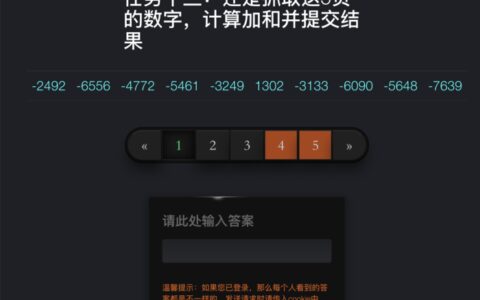当使用Python 2.7进行网络爬虫的时候,首先需要安装requests库,该库可以在Python代码中进行网络请求。
pip install requests
接下来,我们需要从一个URL中获取HTML内容。使用requests库可以轻松实现这一操作。
import requests
response = requests.get('https://www.baidu.com/')
html = response.content
在获得HTML内容之后,接下来需要解析HTML。Python中最流行的解析库是BeautifulSoup,它可以将HTML转换为Python对象。
pip install beautifulsoup4
from bs4 import BeautifulSoup
soup = BeautifulSoup(html, 'html.parser')
BeautifulSoup支持多种查找HTML元素的方法,例如在爬取一个标题为“Python教程”的网页时,可以使用find_all方法查找所有h1标签,再从中筛选出指定的标题。
import requests
from bs4 import BeautifulSoup
response = requests.get('https://www.example.com/')
html = response.content
soup = BeautifulSoup(html, 'html.parser')
h1_tags = soup.find_all('h1')
for h1_tag in h1_tags:
if h1_tag.string == 'Python教程':
print('找到了Python教程!')
另外一个示例是爬取一个网页中的所有图片,以便进行数据分析和处理。首先,需要使用requests库请求网页内容。然后,使用re库或BeautifulSoup库查找其中的图片链接。最后,使用requests库下载图片。
使用re库实现:
import requests
import re
response = requests.get('https://www.example.com/')
html = response.content
img_urls = re.findall('<img.*?src="(.*?)".*?>', html)
for img_url in img_urls:
response = requests.get(img_url)
with open('image.jpg', 'wb') as f:
f.write(response.content)
或者使用BeautifulSoup库实现:
import requests
from bs4 import BeautifulSoup
response = requests.get('https://www.example.com/')
html = response.content
soup = BeautifulSoup(html, 'html.parser')
img_tags = soup.find_all('img')
for img_tag in img_tags:
img_url = img_tag['src']
response = requests.get(img_url)
with open('image.jpg', 'wb') as f:
f.write(response.content)
本站文章如无特殊说明,均为本站原创,如若转载,请注明出处:python2.7实现爬虫网页数据 - Python技术站

 微信扫一扫
微信扫一扫  支付宝扫一扫
支付宝扫一扫 
